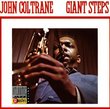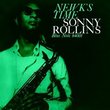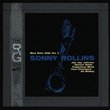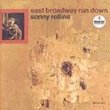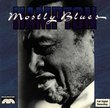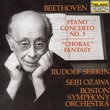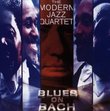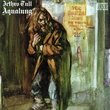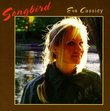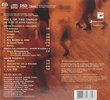| All Artists: Sonny Rollins, Ray Bryant, Walter Booker, Roker Title: On Impulse Members Wishing: 2 Total Copies: 0 Label: Grp Records Original Release Date: 1/1/1986 Re-Release Date: 3/25/1997 Album Type: Original recording reissued, Original recording remastered Genres: Jazz, Pop Styles: Modern Postbebop, Bebop Number of Discs: 1 SwapaCD Credits: 1 UPC: 011105022323 |
Search - Sonny Rollins, Ray Bryant, Walter Booker :: On Impulse
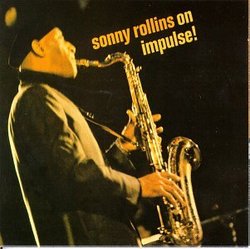 | Sonny Rollins, Ray Bryant, Walter Booker On Impulse Genres: Jazz, Pop
|
Larger Image |
CD DetailsSimilar CDs
Similarly Requested CDs
|
CD ReviewsOne of the best groups Rollins ever recorded with MikeG | England | 06/19/2004 (5 out of 5 stars) "The 1960s were a problematic period for Rollins's music. After a successful "comeback" album with Jim Hall in 1962 he seemed to lose a sense of direction, seemingly dissatisfied with traditional jazz material and harmonic structures and never staying for long with any one performing group. The flirtations with "free" improvisation and over-extended solo performance took him away from the true sources of his inspiration and left no music of lasting interest. Nevertheless, they did add beneficially to the tonal resources of his playing and brought to his improvising on conventional jazz material a new sense of harmonic risk-taking. Those qualities are well in evidence on this album, with the possible exception of the weakest track, "Everything Happens to Me", on which Rollins soon runs out of inspiration (or interest), leaving pianist Ray Bryant to keep the music going with a subtly crafted solo. The best track - one of Rollins's finest performances - is a witty, inventive, up-tempo "Three Little Words", an example of how he can take a banal, trivial tune and transform it through a kind of creative alchemy. The other tracks are not up to this level of inspiration, but are full of good things. "Hold 'Em Joe" is one of those calypso tunes which always brought out the joyous, extrovert side of his playing and there's a nicely shaped, ruminative reading of "Blue Room", at a perfectly judged tempo, which is notable also for some subtle dovetailing of saxophone and piano. "On Green Dolphin Street" is a rather strange track - as on "Everything Happens to Me" Rollins seems to leave most of the work to his colleagues. After a promising statement of the theme at a fairly fast tempo, in his solo he becomes preoccupied with trying to reduce it down to the simplest melodic essentials employing the fewest possible notes. I leave you to judge whether it is an example of that boredom with conventional jazz material which often seemed to afflict Rollins during the 1960s, or whether it is a successful piece of creative jazz minimalism. Like every track on the album it is a good group performance. For me, this was one of the best groups Rollins ever recorded with and it's a pity they produced only the one album. Bryant plays superbly throughout, in a post-bop style which seems to distil the essence of three decades of jazz piano (without sounding at all derivative), and Booker and Roker are alert and inventive musicians, so that there are always interesting things going on in the rhythm section which enliven, without disturbing, what is going on in the 'front line'. Despite the quirkiness and the uneven quality of Rollins's playing, it's an absorbing album that repays repeated listening.I should add that these tracks - minus "On Green Dolphin Street" - are also available on a mid-price CD in the "Priceless Jazz" series, along with three excellent tracks from two other 1960s Rollins sessions: `Alfie' and `East Broadway Rundown'. I would recommend it over this CD as a fine sampler of the best of Rollins's work in the 1960s; though it's a pity that space was not found for the omitted track." ONE OF JAZZ' GREATEST SOLOS & A GREAT CD RBSProds | Deep in the heart of Texas | 06/12/2005 (5 out of 5 stars) "Sonny Rollins - Five MAXIMIZED Stars. Six Stars, if it's allowed. Sonny Rollins has continued to lead in the world of tenor saxophonists, sometimes sharing the championship, sometimes taking sabbaticals to renew and refresh himself, but he never conceded the title. "On Impulse" is a mid-career wonder of a CD with yet another incarnation of a support group: Ray Bryant's gospel-inspired piano, the impeccable plucking of Walter Booker, and the indomitable Mickey Roker on Drums. Suffice it to say from the beginning that "Three Little Words" is a monster of a performance. A real Piece D'Resistance. Cited by a noted jazz critic in the 1960's as one of the greatest tenor sax solos of all time, I must agree. It's mind-blowing and unflagging in speed of thought, execution, swing, and hipness. Rollins crams in so much thought and technique, it's a breathless experience as he continues to reach deeper and deeper still as the performance careens along on both sides of Ray Bryant's wonderful piano solo. And it even ends with a Rollins trademark out-of-tempo solo coda. WOW!!! Hit the 'Repeat' button, again, please! Then move on to one of the most unusual performances of the standard "On Green Dolphin Street" you will ever hear. The original liner notes said this was probably a warm-up song, I disagree. This is intentional, all the way, and Rollins is ON FIRE from jump street, inspiring Bryant and Booker to some fabulous soloing of their own. The unusual surging into and out of 4/4 really contributes to the mysterious atmosphere created by the quartet. And Rollins' noddling in the background, behind the other two solos, really sustains the mood, paving the way for his re-entry. Mickey Roker's drumming is positively unflagging in inventiveness. "Blue Room" is masterful in both tone and conception, re-vitalizing this hoariest of Rodgers & Hart popular songs, first given it's jazz christening by Frankie Trumbauer in 1934. Sonny delivers a powerful thematic performance. Certainly no Rollins performance is complete without one Calypso song and the Belafonte classic "Hold 'em Joe" is a perfect choice: a joyous mixture of calypso beat and inventiveness that will have your toes tapping. Booker and Roker really push Rollins and Bryant along. This is a must have recording in your Sonny Rollins collection. Rollins has been quoted, "I'm always fighting this thing where people are trying to categorize me". Indeed. In this time period, Rollins had morphed out of the 'quartet with guitar' of "The Bridge", into his piano-less "new thing" explorations with some of Ornette's musicians (Cherry and Higgins) on "Our Man in Jazz", into the superb large orchestrations of Oliver Nelson with "Alfie", and was shortly to morph into a different type of 'new thing'-influenced experimentation entitled "East Broadway Rundown" with Coltrane's guys (Jimmy and Elvin) and Freddie Hubbard. Literally drawing inspiration from those he had inspired. Neat Trick, Sonny! This CD was an important part of his relentless musical explorations which have continued to this day with the fabulous Grammy winning CD "This Is What I Do", won at the age of 70. See him live if you can, he's the best I've seen in a live performance. SIX STARS!!!" Sit Back and Relax With this One.... yygsgsdrassil | Crossroads America | 08/24/2001 (5 out of 5 stars) "....and listen to the man play. Most people I talk to who know jazz a bit say that Rollins is best when viewed and heard live. I saw him a few years back at our better jazz venue here and I must confess that he is quite the show person. To me, the Dude rocked the joint, so much so that the people in the better seats were "rattling their jewelry". I had to settle for patting my feet, snapping my fingers and getting that "ah, yeah!" feeling. Rollins is truly one of the greatest saxophonists out there, period. Which means either live or in studio. (True jazz artists perhaps don't make the distinction...) And if survival and art are synonymous he's one of the most creative ones out there because he's lived through so much and thus he puts so much into the sound, his sound, the idiosyncratic runs, the moods, the tempos. This CD captures a studio creation in 1965: he still was into tenor sax, and the purists defined his sound as Post-Bop. Here are 5 standards--"On Green Dolphin Street", "Everything Happens to Me", "Hold 'em Joe", "Blue Room", "Three Little Words" done with the Rollins flair. He was perhaps 'minutes' from creating something else....I think this was done shortly before an Eastern Religion sabbatical...but the jazz here is fabuloso. A great starter CD for those who wish to get into Rollins."
|

 Track Listings (5) - Disc #1
Track Listings (5) - Disc #1